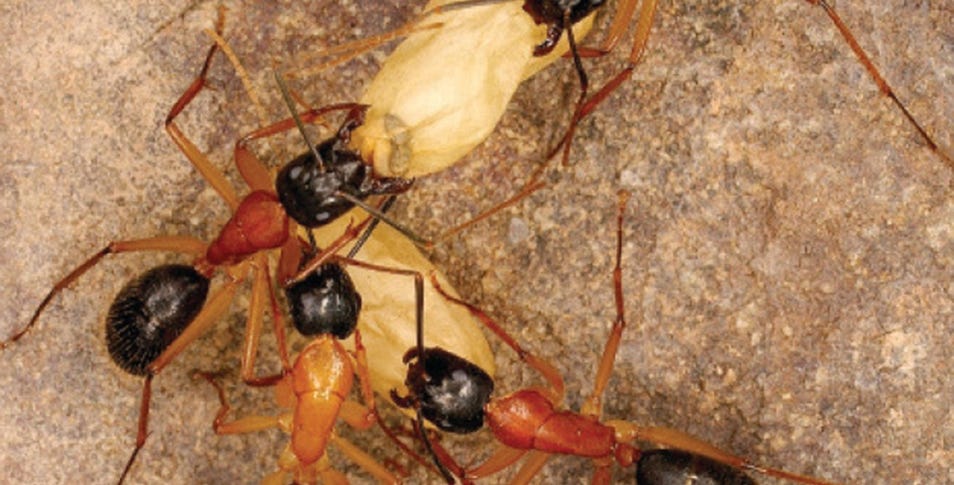EXPERT ADVICE
“When the weather gets cool, the cockroaches are much less active,” says Smith. “They almost go dormant, even though they don’t necessarily die out.”

Ants are one of the most regular and crucial groups of insects. In 1985, Taylor and Brown categorised the Australian fauna and classified them into 9 subfamilies, with 95 genera, and an approximate total of 4000 species. The chief characteristic of ants is their waist. It is usually made up of one or two knobs (which are the first one or two segments of their abdomen), instead of the single petiole of the hymenopterans. The antennae have a unique elbow, with the scape almost as long as the segments past the elbow, with protruding mandibles. Ants reside in colonies made up of several castes and sub castes, like the winged females, winged males, and numerous sub castes of workers. Colonies generally have hundreds to several thousand ants, though the amount can also be less than 100 or more than a million. Winged females and males only appear during times that are suitable for mass mating flights. The male ends up dying after mating and the females shed their wings and generally start a new colony, or sometimes end up becoming a part of an existing one. To start a colony, the female lays a small number of eggs and then feeds the larvae till they are mature.
These first workers then take up the function of nest building and look after this first queen whose only remaining purpose is to lay eggs.
The worker sub castes consist of the worker minors who perform nest building, food foraging, and nursery care. Workers with big heads, called soldiers, defend the nest. Certain species have a sophisticated sub caste named repletes, which play the role of being the storage vessels for the colony’s nectar supply.
Ant nests are generally in the ground, but you can also find them in trees and even among silk-joined leaves, like the green tea ant, Oecophylla Smaragdina, which dominates the tropic region. The infamous Australian ants are aggressive, stinging bull ants, which belong to the large endemic genus Myrmecia. Amid ground nesting ants, the meat ants, Iridomyrmex are the famous red and black scavengers which dominate the more arid regions. One of the biggest genera is Polyrhachis, which consists of metallic species and the ‘golden-bum’ ants.
Ants have a diverse diet that consists of predators and scavengers, plant eaters, fungus eaters, and other specialties, or a combination of all of these. Certain species of plants, especially in the tropics, share a special bond with a particular ant species. The so-called ‘ant plants’ have special chambers that are colonised by ants, and it also feeds the ants in return for protection from herbivores. Another ant relationship comprises specialised species in eight other insect orders, called myrmecophiles. These reside within the nests of ants either as predators or scavengers, or are actively stimulated by the ants as they excrete sweet secretions favoured as ant food. Certain ants actually ‘farm’ aphids, scale insects, and some butterfly larvae to meet this purpose.
The following hymenopteran groups, the sphecid wasps (formerly, Superfamily Sphecidae) and the bees (Superfamily Apoidea), are now considered as a part of one group under the umbrella of the family apoidea.
“When the weather gets cool, the cockroaches are much less active,” says Smith. “They almost go dormant, even though they don’t necessarily die out.”
Mortein Ant sand is fine to use around Citrus Trees. The active ingredient is not systemic in plants so will not harm them.